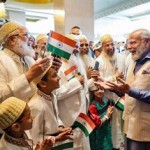This article is the first in a two-part series. Read the second part here.
Among the many photographs of Prime Minister Narendra Modi’s state visit to Egypt, those that look familiar and strike a chord are the ones where he is meeting the diaspora, and at the Fatimid 11th-century Al-Hakim Mosque accompanied by Indian Dawoodi Bohras dressed in their traditional finery. The community has restored this mosque, an important, tangible marker of their spiritual roots in Fatimid (Shia) Egypt.[1] These were the cultural moments on the Prime Minister’s agenda, interspersed with serious discussions with his Egyptian counterpart on the reintroduction of a bilateral Rupee trade agreement.
The latter was a staple of the Egypt-India trade from 1953 to 1977, driven by the Indian diaspora in Cairo. It will once again play a key role in India’s strategic calculations, as Egypt may soon join the proposed India-Middle East-Europe Corridor (IMEC) and the I2U2 grouping, if and when it is expanded. The India-Egypt bilateral[2] has deep roots. It has always been special and is founded on shared colonial experience and the Non-Aligned Movement (1953), where both countries and their leaders, Pandit Jawaharlal Nehru, and Gamel Abdel Nasser, were founder members.[3] The Indian families for whom Egypt is home[4], have lived through and thrived on these special ties.
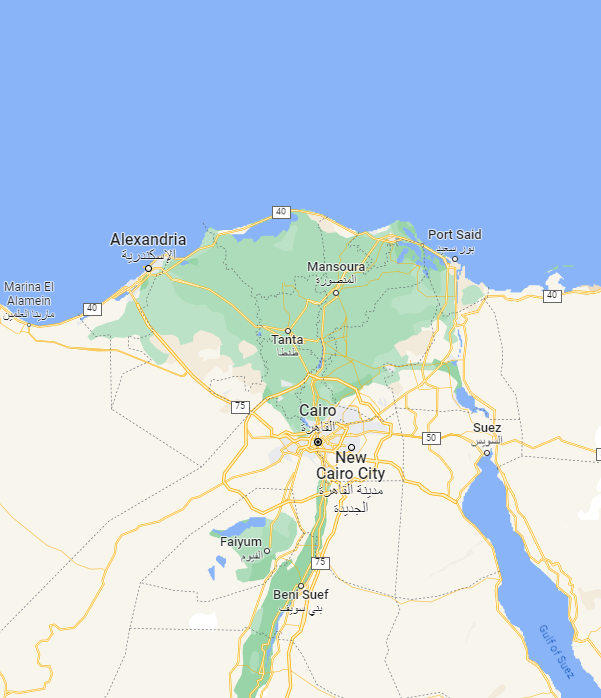
These families[5] comprise a mix of Gujaratis, Sindhis, and Dawoodi Bohras. Indians were a ubiquitous presence when Egypt was a British Protectorate (1919-1922) and thereafter a Kingdom from 1923-1951.[6] Their numbers declined when the country became a Republic in 1952, particularly the robust Sindhi Bhaibandh network which once centered in port towns like Suez, Alexandria, and Port Said.[7] The numbers rose again, as Indian professionals came on postings for UNDP projects in the 1960s and seventies. The decade of the 1990s, Indian middle and senior management professionals were recruited by Indian companies like Birla’s Alexandria Carbon Black and TCI Sanmar, U.S. and Egyptian multinationals, and USAID projects, in Egypt.
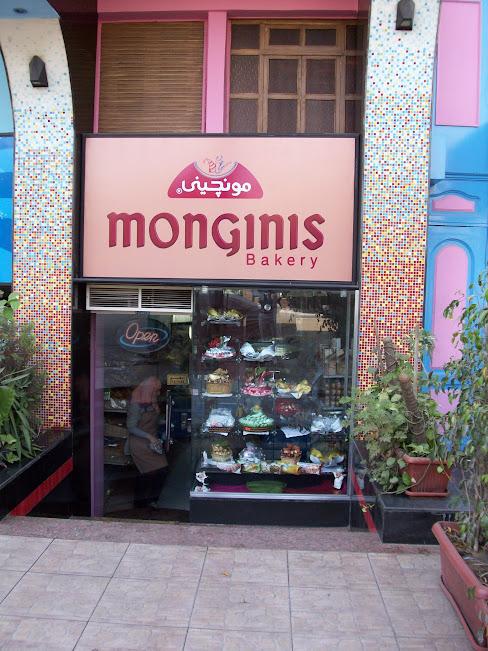
The Dawoodi Bohras are the most recent migrants to Egypt. There were always theology students from this community in Cairo, but since the nineties, many families have settled here. A success story is that of Husein Khorakiwala, of the Dawoodi Bohra Khorakiwala family, owner of the iconic Mumbai patisserie Monginis, who came to holiday in Egypt. His grandson Ebrahim says Husein “just loved the Egyptians, he found that we had shared values. He knew this would be a very good place for us to expand.” In 1987, Husein sent his second son Idris to Egypt to study the market for cakes, and in 1991, Monginis opened its first factory in Abu Rawash, Giza, which made long-shelf-life tea cakes.
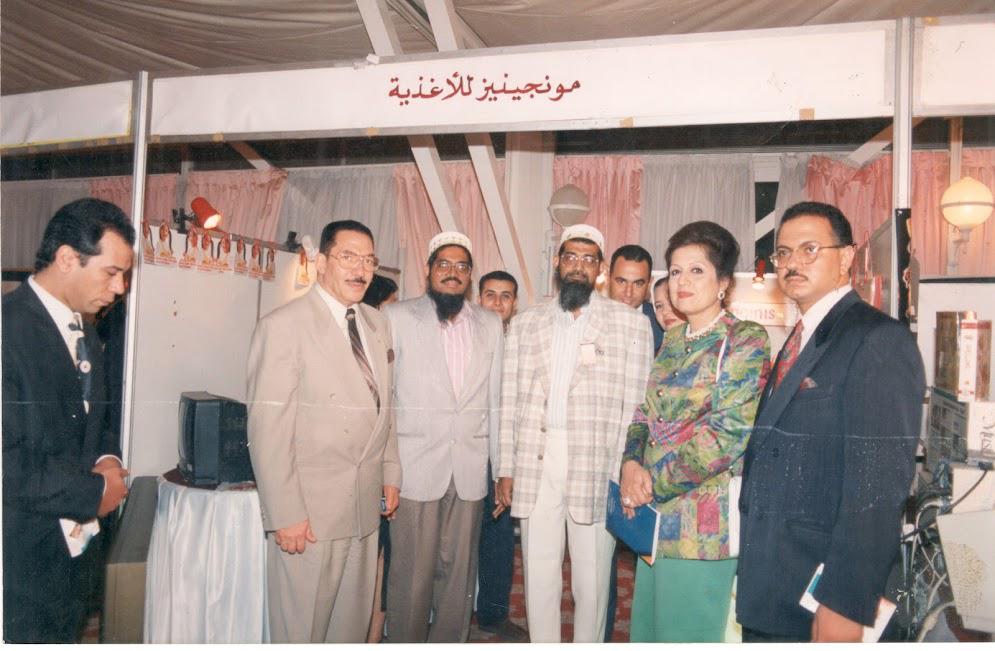
It was a hands-on family affair. “My uncle Idris would go to the market to buy the ingredients and transport them in his car to the factory. And then my second Uncle Quresh would start baking cakes. The same car would be used to distribute these cakes.” In 1997, Monginis[8] set up its first overseas operations in Cairo’s Obour area. It now has 120 cake shops across Egypt and employs 3,000 people.[9] [10] Its expanded offerings include cakes, pastries, Middle Eastern sweets[11], and chocolates – all with extra sweetness to cater to local tastes.
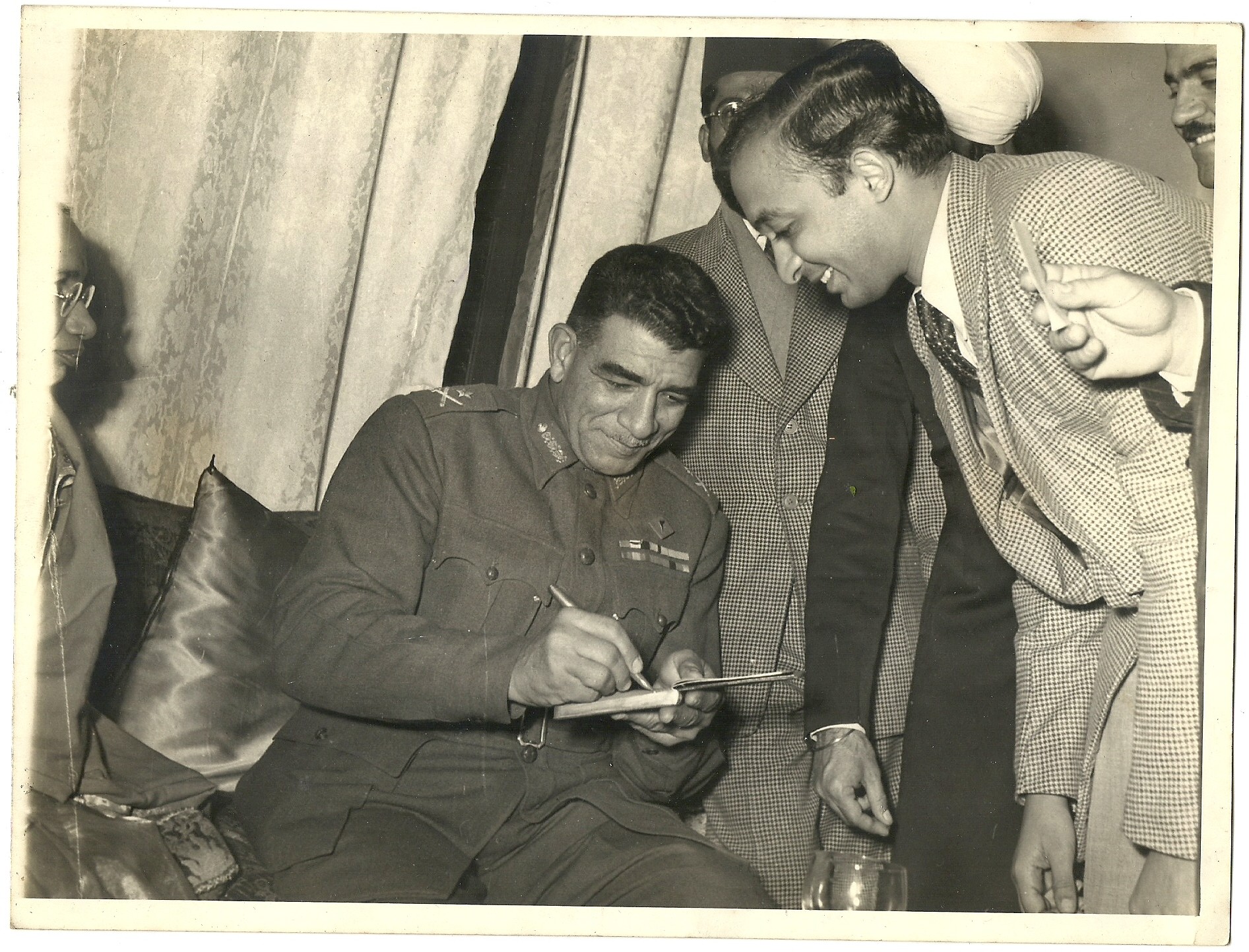
The Kutchi-speaking trading network of the Gulf region and East Africa predates the one in Egypt, which became attractive after Ottoman-ruled Egypt became a British Protectorate. One of the oldest Indian families in Cairo is possibly the Chhotalal Mehtas[12], which has been in Egypt since 1926. Suketu Chandrakant Mehta, a third-generation descendant living in Cairo, recalls his grandfather Nautamlal being a pioneer on two counts: the first to matriculate in their family – a “big deal” in the early 20th century – and the first to venture overseas. An acquaintance in Khartoum, Sudan, was looking for someone to look after his shop for a year, and Nautamlal, then in Rajkot and seeking adventure, stepped up. On his return home, by ship, he stopped in Egypt to see the pyramids.
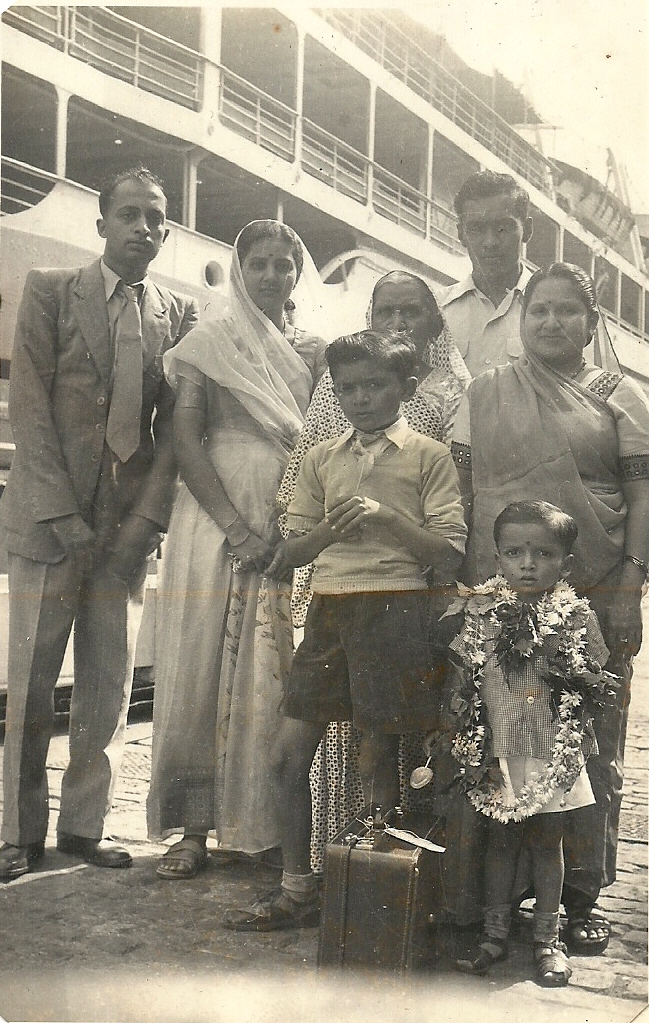
He soon discovered the huge price differential between cotton vests sold in Cairo, priced very low, and the same product in Khartoum. Mehta, Chhotalal & Sons began to trade[13] in vests from a space in Khan el-Khalili, Cairo’s touristy historic bazaar and souk – where they still are. The profitability of this trade triggered expansion: he recruited his three younger brothers from Rajkot and began exporting Egyptian cotton to India and importing spices. In the 1950s they became agents for Indian light engineering goods, and their bestseller was the small agricultural Kirloskar pumps and diesel engines, whose imports were undertaken for many years under the 1953 India-Egypt Rupee Trade Agreement.[14] Their business expanded into Kirloskar mega pumps[15], and since 1984 they have set up 70-75 pumping stations[16] for irrigation across Egypt.
The Sindhi Bhaibandh community had a different history. Nitu Lalwani’s Egyptian sojourn[17], began in cosmopolitan Port Said, located at the Mediterranean entry to the Suez Canal. She married at 19 and soon thereafter, in 1979, the Bombay girl joined her husband, Mohan, in Port Said. He had moved there in 1976, a year after the Egyptians reopened the Suez Canal which had been closed since the Six-Day War with Israel in 1967.[18] He established an outlet of the Hong Kong-based garments and consumer electronics multinational chain, H. Daya International. Nitu initially found the going tough. A big barrier was the language: Arabic. They were both slow in learning to speak it. The other was food. “I arrived in Egypt on 16 February 1979, when there were still food shortages after the War. I also became pregnant within the first year of marriage, so it was difficult for me,” she recalls.
The Lalwanis were one among four Sindhi families in Port Said, and they all lived in the same building: No. 12 in Shara Tara Salim. Three Indian consulate staffers with their families also resided in Port Said. “We sourced Indian groceries from Dubai, as there was a sizeable Sindhi community there,” Nitu remembers. “We adapted by eating a lot of fish, especially the local Burri.”[19] H. Daya International operated exclusively in the Port Said Free Zone, setting up shop at a time when many Sindhi transnational firms had left Egyptian ports. It sold readymade garments and introduced the latest consumer electronics from the typewriters, telexs, and telephones in the 1970s, to televisions, and VCRs in the 1980s. The VCR enabled both the Indian expats and Egyptians to watch Hindi movies – which the locals still enjoy, especially the old Raj Kapoor movies.
Nitu later shifted with her son to Cairo in 1996, where he studied at the well-known Cairo University in Giza. Cairo’s Indian community was not only larger but the Oberoi family – Rai Bahadur and his son-in-law Gautam Khanna – which had been running The Mena Hotel Oberoi, Cairo, since 1972[20], often hosted religious functions in their home to which all Indians were invited. “We attended Guru Nanak Jayanti, Diwali, and Dussehra celebrations in their Cairo home,” says Nitu.
The India connection for these expatriates in Egypt continues to be important. With the renewed vigour in bilateral ties combined with transformative geopolitics in the Middle East, Egypt will be in a nodal position vis-à-vis connectivity projects like the India-Middle-East-Europe-Corridor. More immediately, if a rupee trade agreement between the two countries is signed, it will substantially benefit Indians in Egypt – just as it did in the past.
Sifra Lentin is Fellow, Bombay History, Gateway House
This article was exclusively written for Gateway House: Indian Council on Global Relations. You can read more exclusive content here
Support our work here.
For permission to republish, please contact outreach@gatewayhouse.in
©Copyright 2023 Gateway House: Indian Council on Global Relations. All rights reserved. Any unauthorised copying or reproduction is strictly prohibited.
References
[1] Sifra Lentin, ‘The globalized Dawoodi Bohras of Bombay,’ Gateway House, 25 May 2021, https://www.gatewayhouse.in/globalised-dawoodi-bohra-bombay/.
[2] Embassy of India, Cairo, ‘India – Egypt Economic & Commercial Relations,’ https://www.eoicairo.gov.in/page/economic/.
[3] The India-Egypt bilateral began with mutual recognition of each other as the Most Favoured Nation (MFN) under their Trade and Payments Agreement signed in 1953 and extended every 15 months till 1977. The 1953 Agreement envisaged that a sizeable part of the bilateral trade be carried out in Indian rupees. The 1977 agreement, which replaced it, continued the mutual recognition of MFN but discontinued the Rupee trade. Parallel to the Rupee trade agreement, the leaders of both nations, Pandit Jawaharlal Nehru, and Gamel Abdel Nasser, were founder members of the Non-Aligned Movement (NAM) in 1953; their similar choices in adopting a socialist economic model with planned development, to the rescue package by the International Monetary Fund in 1991 for both their flailing economies showed a convergence in their post-1950 political and economic trajectory till the early 1990s. The collapse of the Soviet Bloc in 1993 resulted in the growing irrelevance of NAM, a geopolitical point of convergence between them for years. The early 21st-century political instability in Egypt reached its nadir with the Arab Spring of 2011, and thereafter. The bilateral has witnessed a renewed upswing under the current presidency of Egyptian President Abdel Fattah El Sisi. This was underscored when he was the chief guest at India’s 73rd Republic Day this year. [Chishti, Sumitra, India’s Trade with Developing Countries Under Bilateral Trade and Payments Agreements, Foreign Trade Review (1973), 8(1), 51–73. doi:10.1177/0015732515730106; ‘Trade Agreement Between The Government of India and The Government of The Arab Republic of Egypt [1977] INTSer 14,’ http://www.commonlii.org/in/other/treaties/INTSer/1977/14.html]
[4] Egypt does not give citizenship to Indians irrespective of how long they have resided in the country. The national identity card given to citizens only recognizes three religions: Islam, Christianity (about 10-15% of Egyptians are Christians), and Judaism (very few Jews remain). Therefore, most Indians residing in Egypt are Indian citizens.
[5] Indians in Egypt – 4301, of which Non-Resident Indians (NRIs) are 3950, and Persons of Indian Origin (PIOs) are 351. [Ministry of External Affairs, Government of India, ‘Population of Overseas Indians,’ last updated 15 Feb 2023, https://www.mea.gov.in/population-of-overseas-indians.htm]
[6] During the inter-war years of 1919-1945, in addition to the few Indian trading families in Cairo (in the 1930s there were 11 traders) and Sindhi shopkeepers and peddlers largely in the ports of Suez, Port Said, and Alexandria, there were also Indian military regiments like the Balochi regiment that fought in World War II. Many Balochi soldiers after the war stayed behind and married locals.
[7] Markovits, Claude, The Global World Of Indian Merchants 1750-1947: Traders of Sind from Bukhara to Panama (UK, Cambridge University Press, 2000), p. 117.
[8] Monginis cake shops began in the early 1900s in Bombay. It was founded as a cafeteria-cum-patisserie by two Italian brothers whose surname was Mongini. It was a popular hang-out for the ex-pats in the city. The intervention of World War II resulted in the brothers leaving India, as Italy was then one of the Axis Powers and an enemy of Great Britain during this war. Monginis was sold to the Khorakiwala family who built the first Akbarally department store on this site near Fountain Circle. The first Monginis counter under Khorakiwala management was inside this store.
[9] Interview with Ebrahim Zoher Khorakiwala on 7 September 2023.
[10] 1500 employees are directly employed by Monginis (Egypt) and about the same amount indirectly employed in Monginis operations through sales agents and franchise shops and stores, in all the Egyptian governorates.
[11] Interview with Ebrahim Zoher Khorakiwala on 7 September 2023. The base for most Middle Eastern sweets is Baklava, Basbusa, and Konafa. Variations are made by changing the fillings, toppings, syrups and sauces.
[12] The Chhotalal Mehta family originally hails from Rajkot, Saurashtra (Gujarat). Their firm in Cairo, Mehta, Chhotalal & Sons, is named after their great-grandfather Chhotalal, who was the court-appointed painter to the King of Rajkot, Lakhajirajsinhji II (reigned 1890-1930).
[13] Interview with Suketu Mehta on 23 August 2023. The trade according to Mehta, was transacted using the postal service. Packaged vests were sent to Khartoum by post, and payments were sent to Cairo using the postal money order.
[14] Chishti, Sumitra, India’s Trade with Developing Countries Under Bilateral Trade and Payments Agreements, Foreign Trade Review (1973), 8(1), 51–73. doi:10.1177/0015732515730106
[15] Ibid. Mehta, Chhotalal & Sons shifted from trade in jute, black pepper, and cotton, to simple chemicals and light engineering goods like the Kirloskar diesel engine and pumps. This latter business in the late 1950s-60s was carried out under the Rupee trade agreement between the United Arab Republic of Egypt and the Republic of India. It was only in 1984 and because of competition from local manufacturers, that Kirloskar’s management suggested they introduce large pumps with all ancillary equipment for setting up pumping stations across Egypt. Besides Kirloskar, they hold the agency for other Indian companies too.
[16] Ibid. The mega pumps discharge between 4000-6000 liters/second, and the electric motors range from 300 to 1000 kilowatts.
[17] Nitu Lalwani lived in Egypt from 1979 to 2022. She returned to India after her husband, Mohan, passed away in February that year. Her son and his family continue to reside in Cairo.
[18] On June 5, 1967, at the beginning of the Six Day War, Egypt closed the Suez Canal. The canal remained closed for exactly eight years, reopening on June 5, 1975. [James Feyrer, ‘Distance, trade, and income — The 1967 to 1975 closing of the Suez canal as a natural experiment,’ Journal of Development Economics, Vol 153, Nov 2021,
[19] The Egyptian Burri fish is the gray mullet, which is abundant in the delta lakes of the River Nile.
[20] The Oberoi Group assumed management of the Egyptian General Company for Tourism & Hotels (EGOTH) owned Mena House Hotel in 1972 when it was renamed The Mena House Oberoi. In December 1977, Egypt and Israel sat down together at The Mena House in a quest for a peace settlement, which eventually resulted in the Camp David Accords (1978) and the historic peace treaty signed between Egypt and Israel in March 1979.


